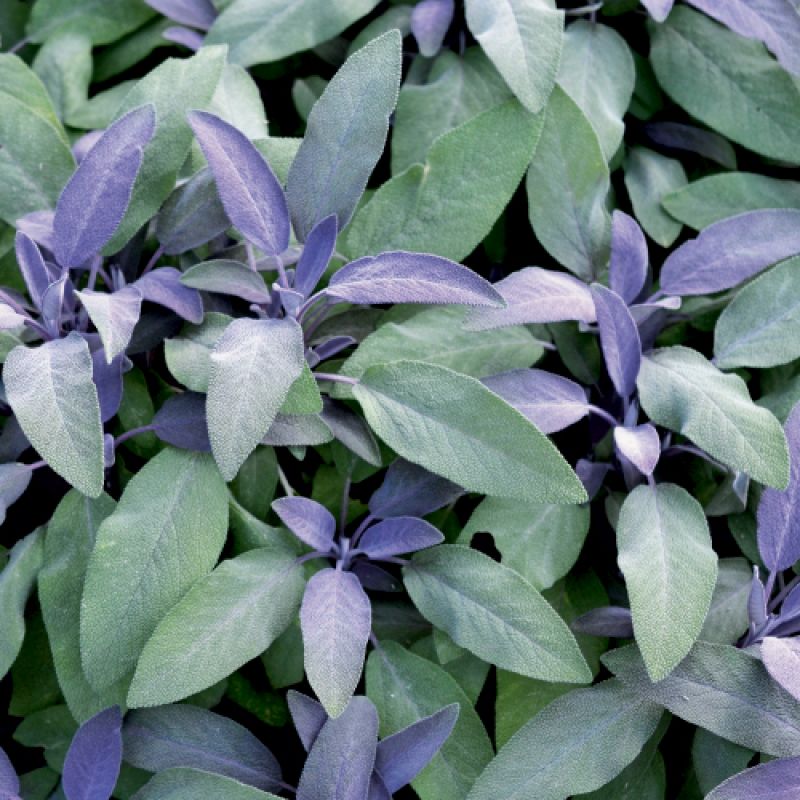
Long considered the “go-to herb” for traditional Thanksgiving feasts, this aromatic perennial adds a depth of flavor to soups, poultry, vegetables, sausages, and stuffing. It’s also a hardy evergreen ornamental with many cultivars that offer a variety of looks in the garden.
Salvia officinalis hails from the warm, dry Mediterranean, so it thrives in the Lowcountry’s well-draining, sandy soils. However, sage does not care for humidity and will die in soggy conditions. Be sure to prune its inner stems to encourage good air circulation. This will allow the leaves to dry faster and cut down on fungus. Plant sage in the fall so that it will become established in time to create new growth in the spring. Harvest the leaves often and use them, fresh or dried, in your cooking year-round.
Purple sage (Salvia officinalis ‘Purpurascens’)
This compact, shrub-like herb grows up to two feet in height and nearly the same in width and produces spikes of lavender-blue flowers in the late spring to early summer. Its oblong, steely-purple and green leaves can be used fresh or dried in cooking.
Common sage (Salvia officinalis ‘Berggarten’)
The blue-gray, rounded leaves of this compact grower have great flavor. It provides an elegant backdrop when planted with colorful annuals.
Golden leaf sage (Salvia officinalis ‘Icterina’)
The variegated golden foliage of this Proven Winner selection has a beautiful low-mounding habit, making it a perfect pick for filling garden beds or containers. It sends off spikes of violet-blue flowers in early summer.